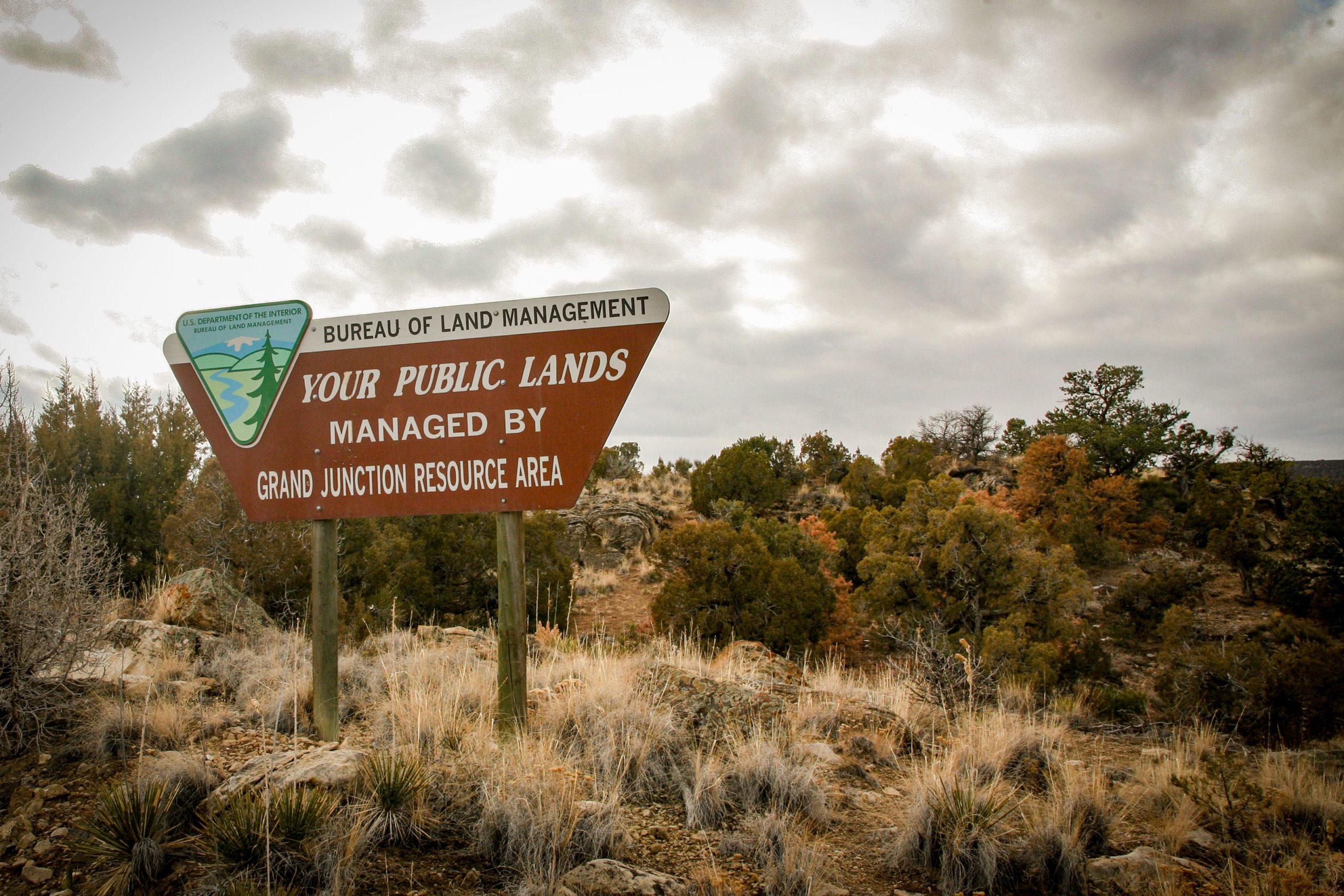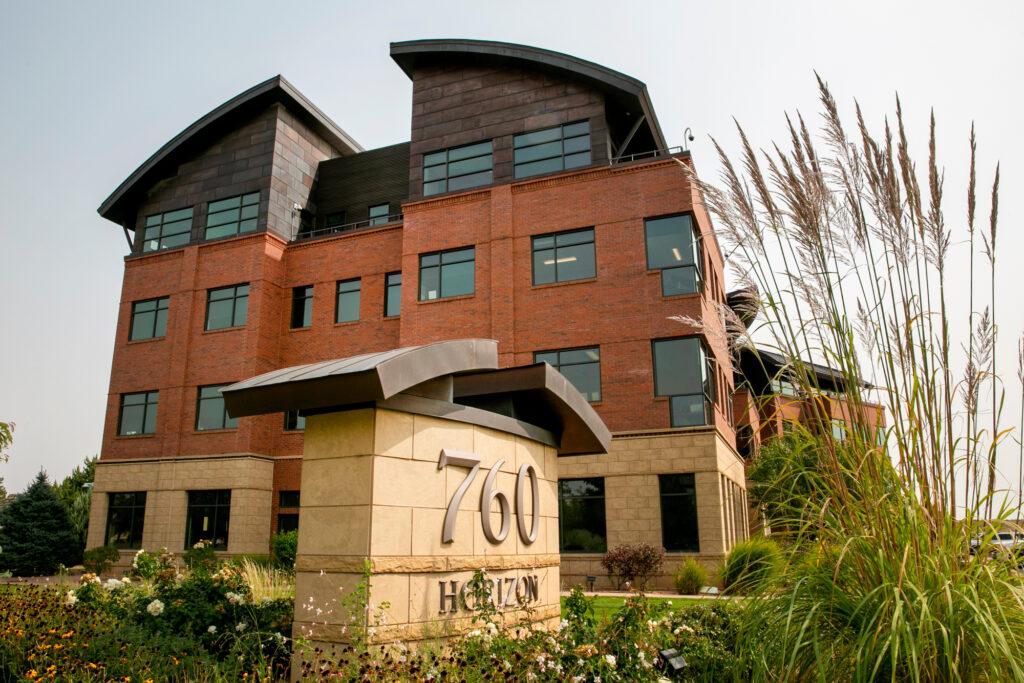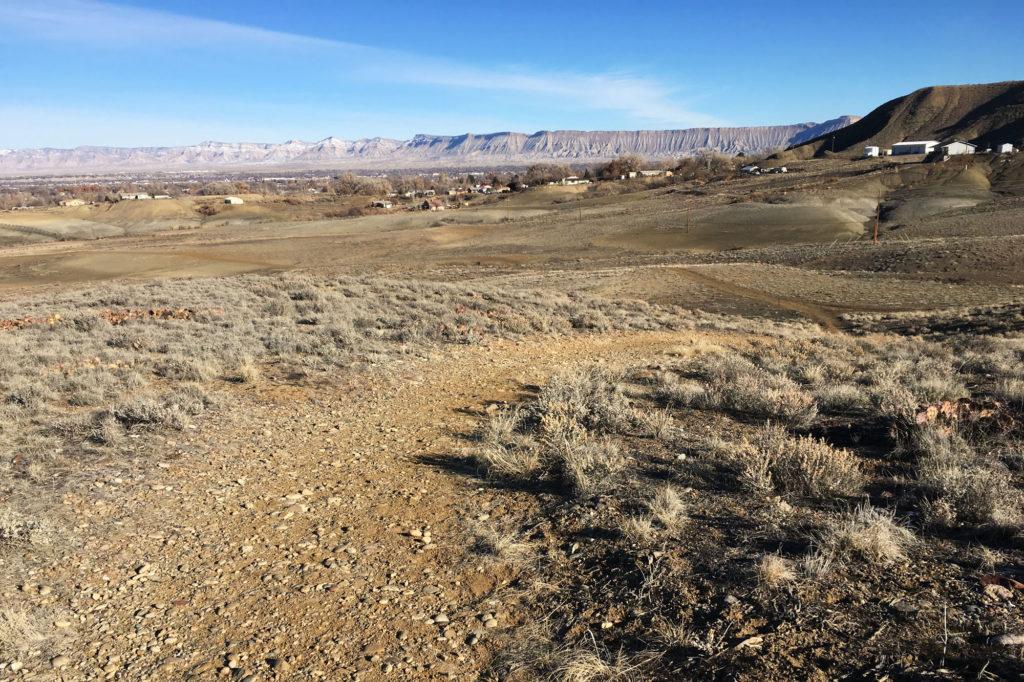
“When you're located in a place that has no public lands at all, you just don't understand it,” said Robin Brown, executive director of the Grand Junction Economic Partnership.
It’s just one of the reasons she’s glad that, after years of talking about moving, the Bureau of Land Management headquarters relocated its headquarters from Washington, D.C. to the Western Slope of Colorado, a place with lots of public lands.
On top of that, Brown celebrates the fact that it’s been a boon to the local economy, bringing jobs — “and they’re high wage jobs.” — and the cache that comes with being the home of the BLM headquarters also doesn’t hurt, either.
But more than a year after the move became official, others hold a dimmer view of its results.
“The move caused a lot of damage to the agency,” said Scott Braden, director of the Colorado Wildlands Project, a group working to conserve BLM-managed public lands in Colorado.
He also previously served on a BLM Resource Advisory Council.
“I feel like it hasn't been a fully functional headquarters,” Braden said.
The Department of the Interior released numbers at the end of January showing that of the 328 D.C.-based BLM headquarter employees whose jobs were moved to offices in the West, only 41 stayed with the Bureau. The rest — just over 87 percent — retired or found employment elsewhere. With vacancies at the top of the agency and the pandemic shifting many people to remote work just as the Grand Junction office was opening, it’s unclear how many staff are currently located in Grand Junction.
Aaron Weiss, deputy director of the Center for Western Priorities, described the move in blunt terms.
“This headquarters move has just been a total failure,” Weiss said.
Some people would argue that trimming government is not necessarily a bad thing, and supporters of the move have argued that BLM employees unwilling to relocate closer to the lands they manage weren’t a good fit for the agency anyway. But for Weiss, the numbers confirmed his worst fears about the Trump administration’s real motivation.
“The headquarters move was not a move. It was simply an evisceration of the agency,” Weiss said.
Some Democrats in Congress raised other concerns. They said there was a lack of transparency over simple questions like how many people were actually planning to move or even a detailed cost-benefit analysis to accompany the justification. The lack of information created a weak foundation for large congressional support for the move.

A BLM for the 21st century
So, what to do about a move as messy as the BLM? That’s the question now facing the Biden administration.
It’s much more complex than asking where a person should work. And everyone with a stake in the BLM has ideas. Weiss thinks the place to start is with a clear assessment of how hollowed out the agency really is.
“Once we know what the damage is, then you can start to make a plan for how to rebuild the agency,” he explained.
That means looking at why people left — and it just wasn’t the move. Most employees knew that was an option for years before it became a reality. Colorado Sen. Cory Gardner first brought up the possibility of moving an agency like the BLM out west in June 2016, during a hearing with then-director Neil Kornze.
There were other reasons people were looking for the exits.
There hasn’t been a confirmed director of the agency since the end of the Obama administration. President Donald Trump didn’t nominate someone to fill that role until his final year in office, when he nominated then-acting director William Perry Pendley, a controversial figure who at one point called for the sale of public lands, and whose nomination was pulled.
The Trump administration also took a different view of career staff than the previous administration. Numerous accounts of the White House described the president dismissing their opinions and suggested a deep-seated distrust of career civil servants.
“It's been incredibly hard to see our civil servants so degraded over the past four years,” said Christy Goldfuss, with the Center for American Progress.
She also co-wrote a roadmap of climate recommendations, Climate 21, for the new administration, which includes moving BLM headquarters back to D.C.
Goldfuss said there was a dramatic sea change in the agency’s focus from the Obama administration to the Trump administration.
“I don't think we're ever going to see the kind of shift that we've seen in the past four years,” she said.
The BLM’s mandate is wide-ranging — it’s responsible for balancing multiple uses on 245 million acres of surface public lands and 700 million acres of subsurface minerals in the western U.S., everything from hiking and hunting to grazing and energy. While Obama put the focus on climate and renewables, the Trump administration aimed to maximize energy production, oil and gas in particular.
Steve Ellis, who worked for the agency for 38 years, rising to become deputy director of operations under the Obama administration, said President Joe Biden must think through where the BLM needs to go.
“Don’t look in the rearview mirror, but look forward,” Ellis said. “Focus on the future. Solidify what you want the BLM to be and then organize around that.”
Ellis, who has and continues to be an outspoken critic of the move, thinks Grand Junction could still play a role in the bureau’s future. And he’s not alone.
“I think that it's difficult to rescue a decision that I believe was made in bad faith by the last administration, but I'm optimistic,” Braden said. “I'm optimistic that the BLM can find a way forward that maintains a headquarters in Grand Junction.”
But Braden is quick to add it would have to share that title with a central office in Washington, D.C. Most people think the best Grand Junction can hope for is to get demoted to western headquarters or hub.
Whatever you call it, Nada Culver, vice president for public lands for the National Audubon Society, said the BLM as it’s currently structured isn’t really working.
“Right now, it's not able to function because there isn't a headquarters in D.C. and there isn't a real headquarters in Grand Junction. You know, I think everyone can agree on that,” she said.
Culver adds the Biden administration should avoid repeats of past mistakes, like “having some immediate edict that says ‘now you shall all have to move,’” even if that move is a return to D.C.

Boebert makes an appeal, but it probably won't have much impact
There’s a saying in Washington: If you’re not at the table, you’re on the menu. As much as people like to criticize the ‘D.C. bubble,’ it’s a bubble for a reason.
Government operations are centralized there, and Ellis argues you want the decision-makers where the decisions are being made, especially with regards to their agency. They need a chance to form relationships, friendships with leaders across government.
“I could never have developed those relationships on Zoom, on conference calls or an occasional fly in from the West,” Ellis said.
Republican Congresswoman Lauren Boebert, who represents the district, takes a different view.
“It only makes sense to have the people managing hundreds of millions of acres of land located near that land and accessible to those communities,” she said during a tele-town hall recently.
But Braden points out the move didn’t stop D.C. from overruling one of the biggest recent decisions BLM made about lands in Colorado. After years of community input and work with BLM field directors on the Uncompahgre Resources Management Plan, it was changed by the Interior Department in D.C. to better align with the Trump administration’s focus on energy dominance.
“That was, sort of, in contradiction from a lot of the messaging we were hearing that (this) moves D.C. leadership and decision-making closer to the community served,” he said.
Colorado has filed suit against the BLM over the plan.
Braden and others also counter that the bureau could better serve communities by empowering its state directors or field managers.
Still, Boebert wrote a letter to the Biden administration, one that other House Republicans including Colorado Reps. Ken Buck and Doug Lamborn signed onto, touting easier access to leaders, better decision-making and lower costs if the headquarters stays in Grand Junction.
Weiss doesn't expect it to have much impact.
“Lauren Boebert has zero sway with the Biden administration,” he said.
It's not just that she's a Republican and a freshman, but her actions — from her combative tweets to her objection to the election certification — don’t set her up as someone the administration will likely be eager to negotiate with.
“And that's certainly not a good starting point when it comes to BLM headquarters,” Weiss said.

Responsibility to make the case for Grand Junction will likely fall to Democrats
Instead, just as Gardner was the focal point of negotiations with the Trump administration on the move, many expect it will be on Colorado's Democrats to make the case now for Grand Junction.
Sens. Michael Bennet and John Hickenlooper sent a joint letter to Biden arguing the problem with the Grand Junction office is mainly that not enough positions are located there. Most people, including Brown, were expecting hundreds of headquarters staff to move to Grand Junction, far more than the 41 currently allocated there.
“We continue to support a full BLM headquarters in Grand Junction. We believe that such an effort must be more than symbolic and must include the staff and resources to improve management and protect our public land,” they wrote.
Gov. Jared Polis sent his own letter, too, saying he’s “extremely supportive of the Bureau of Land Management keeping and expanding their national headquarters in our great state.”
“I think the only thing that will save the BLM headquarters in Grand Junction is a true bipartisan effort from the entire Colorado delegation, a coordinated effort,” Robin Brown said.
That might be easier said than done given the current personalities and the lack of a coordinated bipartisan delegation letter, although the letters from Boebert and the senators both urged the president to work across the aisle on the issue.
Brown has organized a round table with the senators, the governor and 20 municipalities Monday to work on a game plan for their lobbying effort and come up with deliverables to make the headquarters a truly viable one. Boebert was added to the meeting participant list on Monday.
She admits she’s disappointed by the partisan tinge the move has taken on, but she sees it as a microcosm of what’s happening across every issue and decision being made at the federal level. She is hoping the Interior Secretary-designate, Deb Haaland, who has been critical of the move, will come out to Grand Junction in person.
The Interior Department said in a statement that its new leadership “will work with BLM career staff to understand the ramifications of the headquarters move and determine if any adjustments need to be made.”
Editor's note: This story was updated after CPR News learned that Rep. Boebert did attend the meeting organized by the Grand Juction Economic Partnership.








